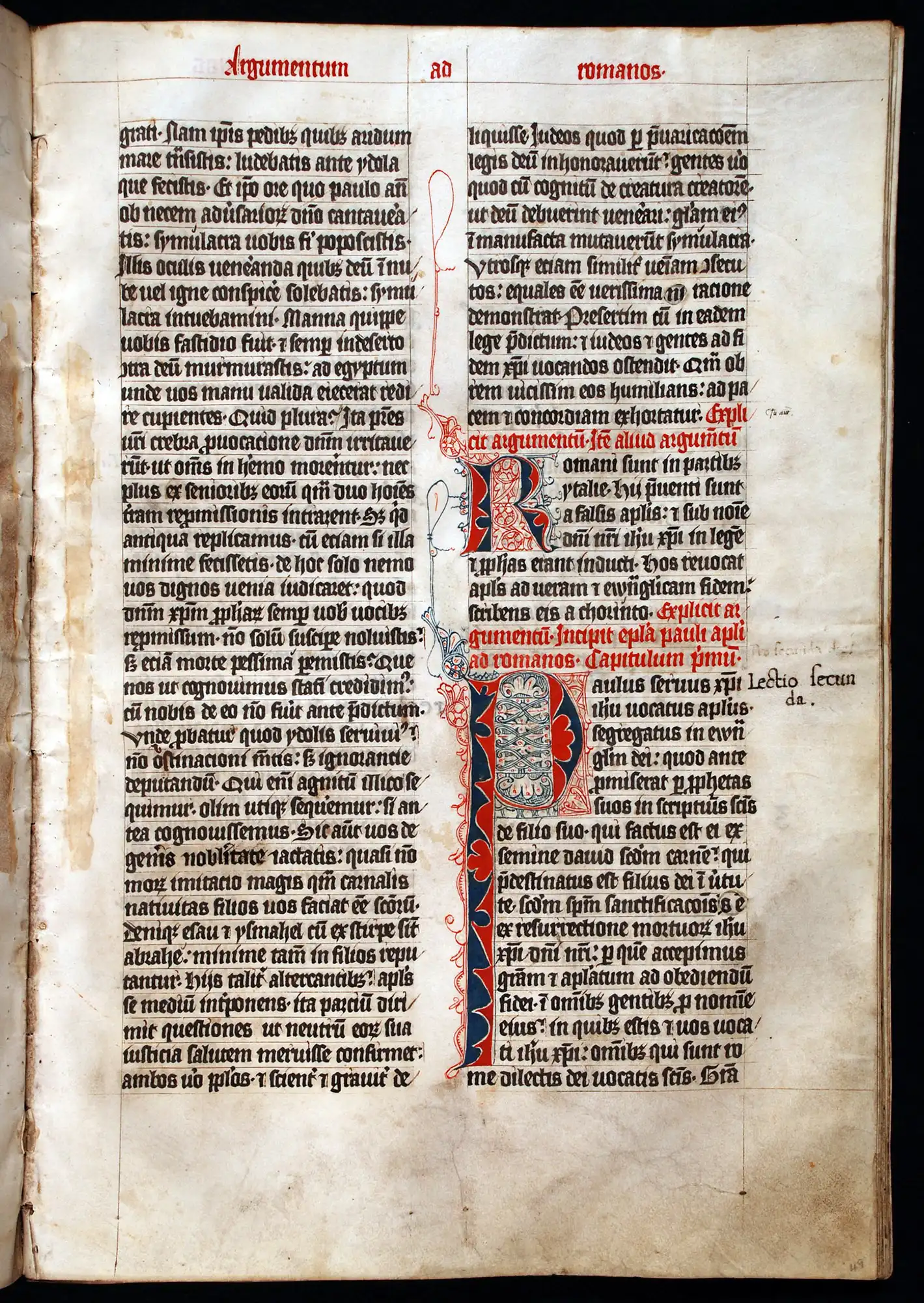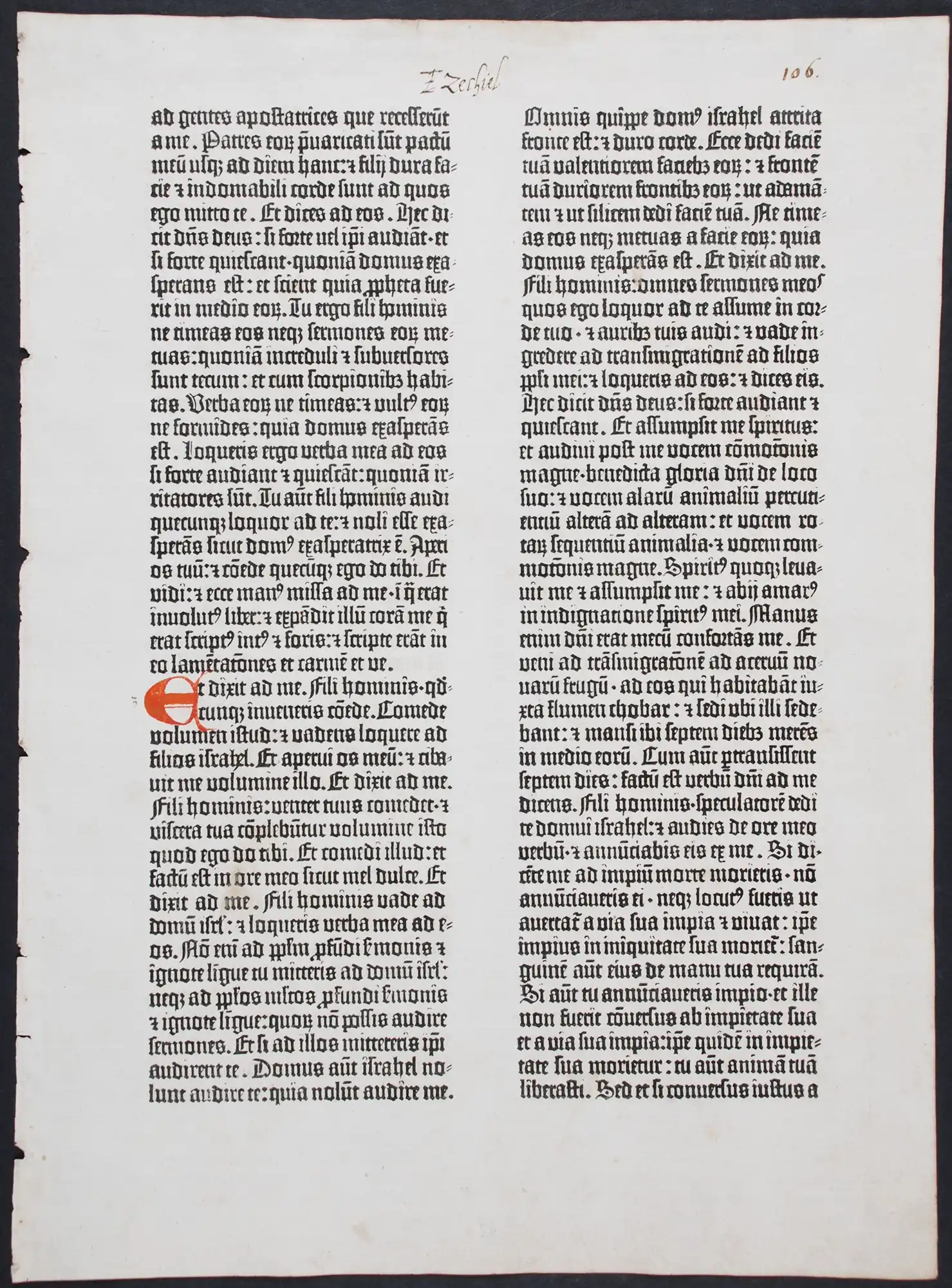Case 4
- Bibles: From Manuscript to Print

Bible (fragmentary), in Latin. Poland, early fourteenth century. Reed MS4a.
In his 1967 Autobiography, A.H. Reed recalls that “about 1925 I bought a 14th century folio manuscript of a portion of the Gospels and Epistles for £15 – a fraction of its present-day value.” Designed for public reading aloud, it probably originally existed in four separate volumes.
Reed promptly divided into sections the 139-leaf portion that he had purchased. The binding and 47 leaves were presented to Trinity Theological College, Auckland. In 1948, the remaining 66 leaves were given to Dunedin Public Library as part of Reed’s original gift. He also gave individual leaves to other religious and educational institutions and to friends.
In 2007, the manuscript was identified by Christopher de Hamel as once belonging to the Cistercian Abbey of Byszewo (or Koronowo) near Gdansk – the first manuscript of Polish origin to be identified in New Zealand.

Bible. Latin Vulgate. Mainz: Johann Gutenberg, ca. 1455. Single leaf. Part of Ezekiel 2:3-4:17.
The invention of printing with moveable type in the mid-fifteenth century is one of the most important developments in the history of western culture and civilisation. The printing of a Latin Bible (ca. 1455) by Johann Gutenberg (ca. 1399–1468) in Mainz, Germany, from a forme of metal type, marked the beginning of a process that scarcely changed in its essentials for 400 years.
This Gutenberg leaf was purchased for the Library by A.H. Reed from Chas J. Sawyer of London in 1954. It is from a portion of a Gutenberg Bible discovered in a cottage near Mainz in the 19th century and sold as separate pages in the 1950s.
It is worth examining against the lectern Bible manuscript alongside. The first sets of metal typefaces were modelled on contemporary manuscript letterforms. Indeed, early printed books mirrored their manuscript counterparts in form and layout.

Bible. Latin Vulgate. Mainz: Johann Gutenberg, ca. 1455. Single leaf. Part of Ezekiel 2:3-4:17.
Open image in new window

